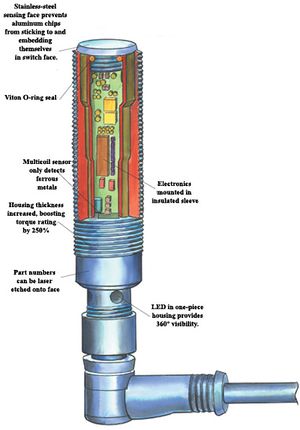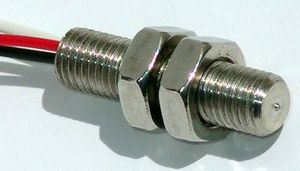Proximity Switches
Proximity Switch is a sensor able to detect the presence of nearby objects without any physical contact.A proximity switch often emits an electromagnetic field or a beam of electromagnetic radiation , and looks for changes in the field or return signal. The object being sensed is often referred to as the proximity switch's target. Different proximity switch targets demand different switchs. For example, a capacitive photoelectric switch might be suitable for a plastic target; an inductive proximity switch always requires a metal target. The maximum distance that this switch can detect is defined nominal range. Some switch have adjustments of the nominal range or means to report a graduated detection distance. Proximity switches can have a high reliability and long functional life because of the absence of mechanical parts and lack of physical contact between switch and the sensed object. Proximity switches are also used in machine vibration monitoring to measure the variation in distance between a shaft and its support bearing. This is common in large steam turbines,compressors, and motors that use sleeve-type bearings. International Electrotechnical Commission (IEC) 60947-5-2 defines the technical details of proximity switches. A proximity switch adjusted to a very short range is often used as a touch switch.
Applications
- Parktronic, car bumpers that sense distance to nearby cars for parking
- Ground proximity warning system for aviation safety
- Vibration measurements of rotating shafts in machinery
- Top dead centre (TDC)/camshaft sensor in reciprocating engines.
- Sheet break sensing in paper machine.
- Anti-aircraft warfare
- Roller coasters
- Conveyor systems
- Touch screens on mobile devices that come in close proximity with the face

